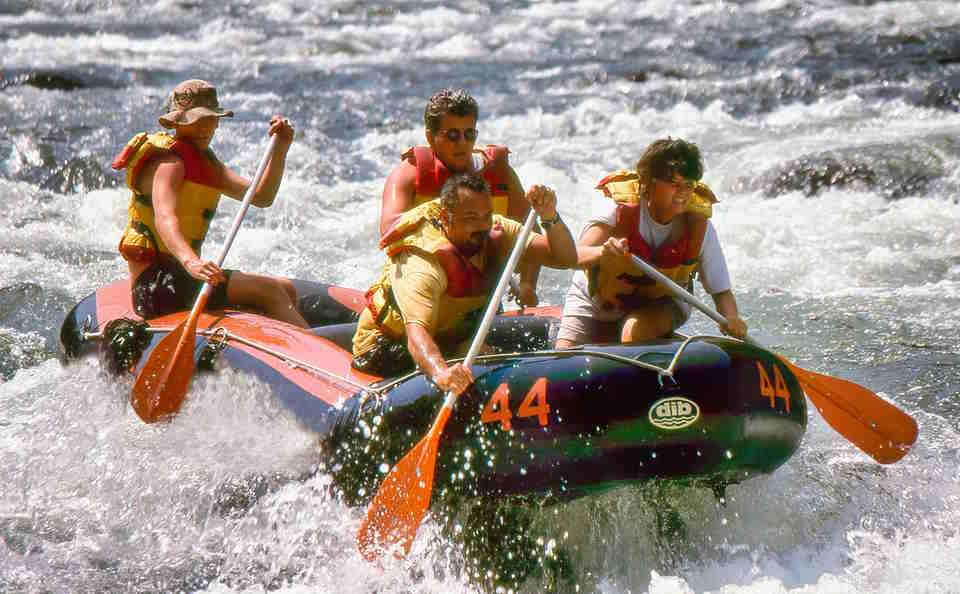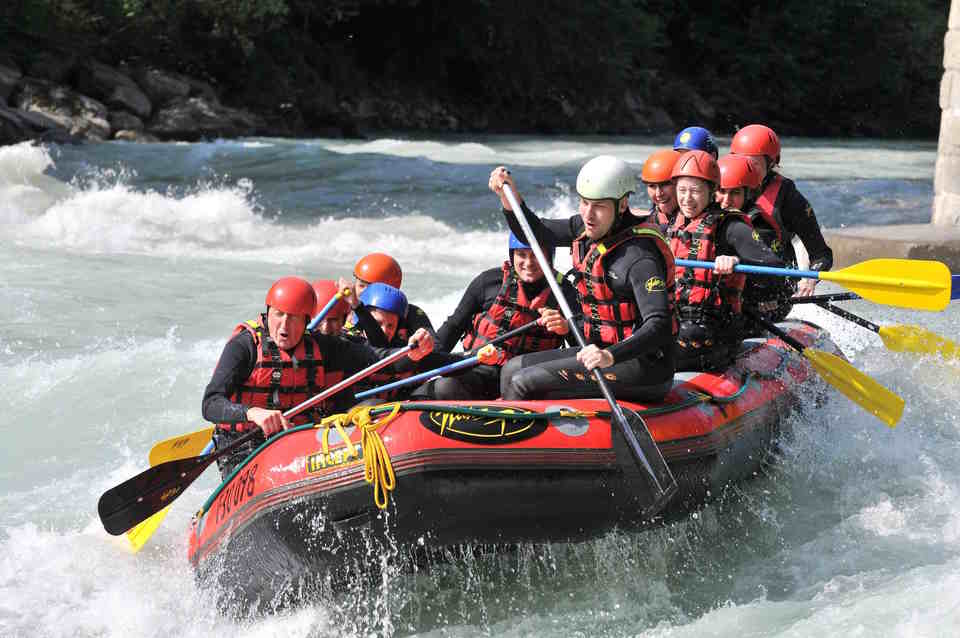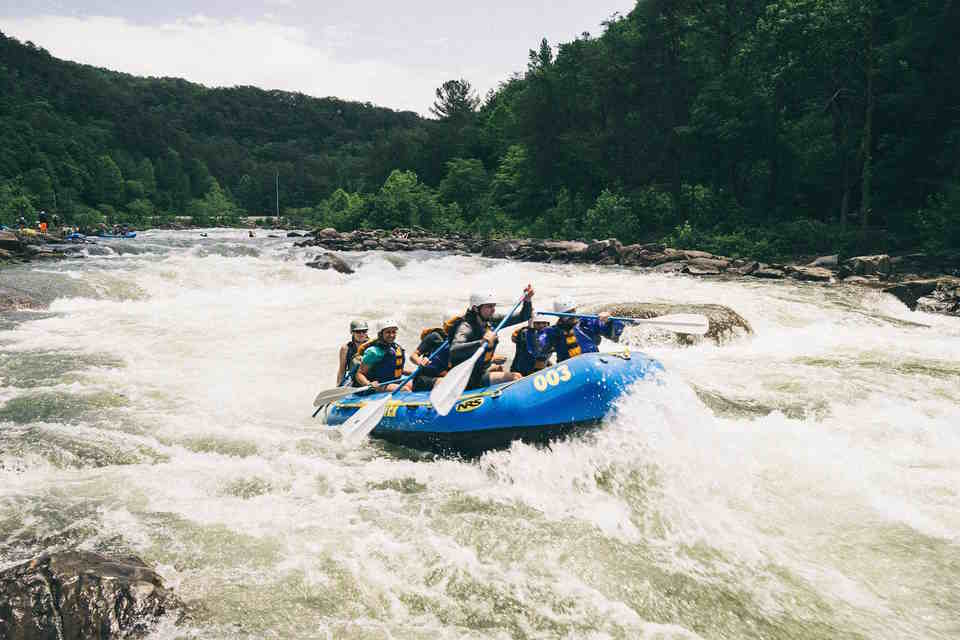White water rafting is an exhilarating sport that has been gaining popularity over the years. It involves navigating through rapids and white water in an inflatable raft. However, some people are hesitant to try it out due to safety concerns. So, is white water rafting dangerous? What are the disadvantages? What are the common injuries? We’ll answer these questions and more, as well as offer some tips on how to overcome fear and enjoy the thrill of white water rafting. Whether you’re a beginner or an experienced rafter, keep reading to learn more!
Introduction
When many people think of white water rafting, one of their first concerns is whether or not the activity is dangerous. While there are certainly risks involved, with proper preparation and precautions, white water rafting can be a safe and enjoyable experience.
- Important Safety Measures
One of the most important safety measures in white water rafting is wearing appropriate gear. A properly fitting helmet and personal flotation device (PFD) are essential. It’s also important to pay close attention to the instructions given by your guide. Knowing what to do in different scenarios, such as how to properly position yourself in the raft or how to respond if you fall out, can help prevent accidents.
- White Water Classifications
Another aspect of safety in white water rafting is understanding the different classifications of rapids. The International Scale of River Difficulty ranges from Class I (easy) to Class VI (extremely challenging and potentially deadly). Most commercial white water rafting trips take place on Class III or IV rapids, which require a moderate level of skill and experience. It’s important to be honest with yourself about your abilities and choose a river trip that is appropriate for your skill level.
| Advantages | Disadvantages |
|---|---|
| Provides a thrill and sense of adventure Allows you to see beautiful scenery from a unique perspective Can be a fun group activity with friends or family |
Can be expensive Requires a certain level of physical fitness Carries inherent risks |
How Do You Not Be Scared of White Water Rafting?
White water rafting can be an exhilarating and exciting adventure. But for those who have not tried it before, it can also be a scary experience. The thought of riding rapids of varying intensity can be a daunting prospect. However, with a few tips and tricks, you can get over your fears and enjoy this thrilling activity. Here are some ways to not be scared of white water rafting:
1. Choose a Beginner’s Route
If it’s your first time rafting, it’s always best to start with something easy. Don’t jump into the deep end, as they say. Pick a beginner’s route that’s not too challenging. This way, you can ease yourself into rafting and build up your confidence. Gradually, you can move on to more difficult routes as you gain experience and confidence.
2. Listen to the Guide
Always listen to the guide. They are there to help you navigate the rapids safely and enjoyably. Follow their instructions to the letter. They know what they’re doing and have a lot of experience in handling sudden situations that may arise during the ride. Trust them and stay focused on their guidance.
3. Wear Appropriate Gear
Wearing the proper gear is essential when rafting. It not only helps you stay safe, but it can also give you a sense of confidence. Wear a good quality life jacket that fits well. Wear sturdy footwear that won’t slip on wet rocks or riverbanks. And don’t forget to put on a helmet to protect your head from bumps and bruises.
What Are the Disadvantages of White Water Rafting?
White water rafting can be an exhilarating experience, but it also has its disadvantages. While rafting is generally safe, there are a number of risks involved that can lead to injury or even death. It’s important to be aware of these risks before deciding to go on a white water rafting trip.
One of the biggest disadvantages of white water rafting is the risk of injury. Rafting involves navigating through fast-moving water, which can be unpredictable and dangerous. Common injuries include broken bones, head injuries, and cuts and bruises. Even with proper safety equipment and experienced guides, accidents can still happen.
Another disadvantage of white water rafting is the cost. Rafting trips can be expensive, and the gear and clothing required can also add to the total cost. Additionally, some rafting companies require a minimum number of participants, so if you’re traveling alone or in a small group, you may be required to pay more to participate.
- Tip: Research different rafting companies and compare prices to find the best deal.
Finally, white water rafting can be physically demanding. Depending on the intensity of the rapids and the length of the trip, rafting can require a lot of physical exertion. This can be a disadvantage for those who are not physically fit or have health issues.
| Disadvantages of White Water Rafting | Solutions |
|---|---|
| Injuries | Wear proper safety equipment and choose a reputable rafting company with experienced guides. |
| Cost | Research different companies and compare prices; go with a larger group to reduce cost per person. |
| Physical Demands | Prepare beforehand with exercise and ensure that you are healthy enough for the trip. |
Despite these disadvantages, many people still find white water rafting to be a thrilling and rewarding experience. By being aware of the risks and taking proper precautions, you can enjoy the ride while minimizing the downsides.
What Are the Most Common Injuries in Whitewater Rafting?
White water rafting is an exciting and thrilling adventure sport, but like all adventure sports, it comes with a certain amount of risk. Although it is an enjoyable activity, it can also be dangerous, especially if proper safety precautions are not taken. Even with all the safety measures in place, there is still a risk of injuries. Injuries are common in whitewater rafting, and certain injuries are more common than others. We will discuss the most common injuries that can occur during whitewater rafting.
1. Bruises and Scrapes: Bruises and scrapes are the most common injuries that occur during white water rafting. These injuries are usually caused by hitting rocks, branches, or other obstacles in the water. These injuries are not usually severe, but they can be painful and take some time to heal.
- Avoid wearing clothing that can cause chafing or be uncomfortable
- Wear a life jacket
- Stay in the boat at all times
2. Sprains and Strains: Sprains and strains are also common injuries that can occur during white water rafting. These injuries occur when the body is twisted or turned in an unnatural way, causing the muscles and ligaments to stretch or tear. These injuries can be quite severe and require medical attention.
- Stretch before getting into the boat
- Wear appropriate footwear to support your ankles
- Listen to the guide’s instructions carefully
3. Hypothermia: Hypothermia is a condition that occurs when the body temperature drops below normal levels. This can happen in cold water or on a cold day. White water rafting takes place on rivers that are fed by snowmelt, which means that the water can be very cold. Hypothermia can be serious and require immediate medical attention.
| To prevent hypothermia: | To treat hypothermia: |
|---|---|
| Wear proper clothing to stay warm | Get out of the water immediately and seek warmth |
| Bring spare clothing in a dry bag | Remove wet clothing and dry off |
| Stay dry by avoiding splashing water | Drink warm liquids |
By being aware of the common injuries that can occur during whitewater rafting, you can take steps to prevent them from happening. Before going on a rafting trip, it is important to listen to your guide’s instructions carefully and follow all safety guidelines. This will help to ensure that you have a safe and enjoyable whitewater rafting experience.
What Is the Best Age for White Water Rafting?
White water rafting is an exhilarating and adventurous activity that requires participants to navigate through rough rapids and flowing waters. It is an activity that people of all ages can enjoy, but many wonder what the best age is to start this activity. After all, it can be dangerous if not approached with caution, especially for younger children or elderly individuals.
There is no specific age limit to participate in white water rafting. However, it is recommended that children be at least six years old before they start, and that they are accompanied by an adult. This is because children who are under six may not have the necessary strength or coordination to navigate through the rough waters, and may be too scared to enjoy the experience properly.
- White water rafting requires physical strength and endurance. Therefore, individuals with medical conditions such as heart problems, back pain, or pregnant women should avoid this activity.
- It is also important to note that the rafting companies have their own age restrictions, so it’s important to check with them before booking.
On the other hand, there is no upper age limit to participate in white water rafting as long as the participant is in good physical condition. There have been instances where an 80-year-old has participated in this activity and enjoyed it thoroughly. However, it is important to note that as you age, your body may not be as strong as it used to be, and you may require longer rest periods between rapids.
| Age Group | Recommended Class of Rapids |
|---|---|
| 6 to 12 | Class I and II |
| 12 to 50 | Class III and IV |
| 50+ | Class II and III |
There is no specific age limit to participate in white water rafting, as long as the individual is in good physical condition. However, it is important to make sure that children are at least six years old and accompanied by an adult, and that older adults take necessary precautions and rest adequately between rapids. It’s always best to check with the rafting company for their specific age requirements before booking.
Can Beginners Do White Water Rafting?
White water rafting is an enthralling adventure that involves navigating down a river’s rapids in a raft. However, it is not uncommon for people to have reservations about trying it, especially if they are beginners. The question on many people’s minds is: can beginners do white water rafting? The answer is yes!
White water rafting has different levels of difficulty, ranging from Class I to Class VI. Beginners can choose to start with Class I and Class II rapids that offer a relatively smoother ride. Such rapids are ideal for family trips or team-building activities and enable beginners to get a feel of how it’s like to navigate in a raft. Additionally, most white water rafting companies offer introductory courses that include safety guidelines, basic paddling techniques, and signals.
- Another advantage of white water rafting for beginners is the presence of experienced guides who accompany rafters down the river. These guides have extensive knowledge of the rivers and can ensure that everyone is safe.
- Moreover, rafting companies provide the necessary rafting equipment like helmets, life jackets, and paddles, all of which ensure beginners’ safety.
White water rafting is a fun and exciting water sport that anyone, including beginners, can do. As long as you choose an appropriate level of difficulty and follow the safety guidelines, you’re good to go. So go ahead and conquer the rapids. Happy rafting!













